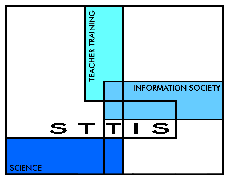Workshop 1
 Contents Contents
|
Section B Learning about the innovation
| Activity
B6 |
Things
that 'just happen' and things
that
don't |
|
|
Aims
-
To introduce the idea of spontaneous and non-spontaneous
changes, and the abstract pictures to represent them.
-
To develop the key idea that spontaneous changes
are those that 'just happen' by themselves and are able to drive other
changes which do not 'just happen' by themselves.
Background
Pupils seem to take quite easily to the phrases 'changes
that just happen by themselves' and 'changes that do not just happen by
themselves', so these terms are used widely in the Energy and Change materials.
The essential idea here, which is built on later in later activities, is
that changes which 'just happen' can drive those which do not. Energy is
often involved in changes, but in thinking about causes for changes, the
focus is on spontaneity rather than on the incorrect explanation that 'energy
drives changes'.
What to do
1. Read page 3
which is intended to be used as an OHT to introduce the ideas. The first
abstract picture on this sheet uses the convention showing energy flowing
from hot to cold and an equilibrium being established. This should be familiar
from previous activities. The second and third pictures have not been met
before here, though pupils using the Energy and Change materials would
have come across them before. The second picture represents a moving object
(with friction) slowing down as energy spreads out into the surroundings.
The third picture represents the particles of two different substances
becoming mixed together.
2. Do the pupil activity on page
4, in which changes are matched against abstract pictures. The changes
are about things warming and cooling, and starting to move and stopping.
If you are doing this with pupils, this would be a useful opportunity to
give them practical experiences of moving things getting warmer, and to
discuss what is happening to the energy when moving things slow down.
The energy is 'spreading out' and the surroundings warm up.
3. After you have done the matching activity,
check your answers on page 2.
4. On page 5,
there is a further activity for pupils, in which they need to identify
pictures which do not make sense. Do this activity, and check your answers
on page 2.
5. On page 6,
there are some examples of statements made by 13-14 year-old pupils explaining
the meaning of these abstract pictures. Read what they say. How well do
you think they understand the basic ideas about changes that ‘just happen’
and those that don’t, and about coupled changes?
|

 Teaching about energy
Teaching about energy

